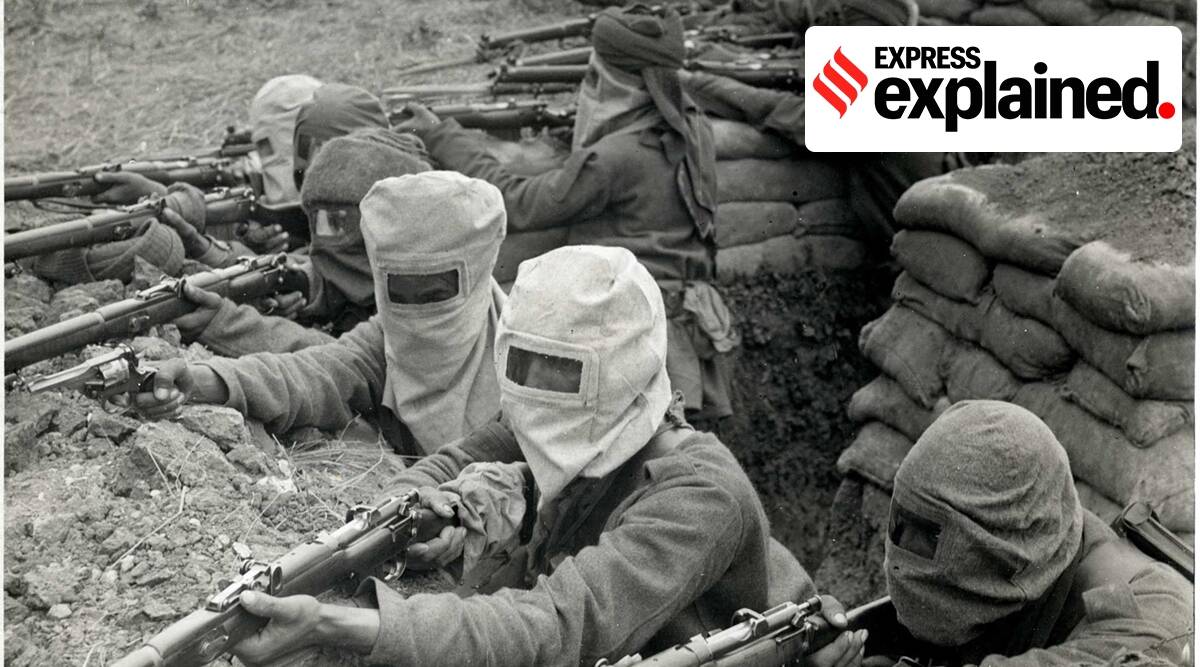Description

Copyright infringement is not intended
Context: A new British Indian Army Memorial, commemorating the sacrifice of millions of Indian soldiers who fought for the British during the two World Wars, is set to be built in the Scottish city of Glasgow. The memorial is visualised as Scotland’s first permanent memorial wall to recognise the service and sacrifice of the British Indian Army during the world wars.
Details:
- Over four million British Indian troops served during both Wars combined, seeing action in almost every theatre of War.
- Their contributions were pivotal but they are seldom remembered in Europe in the ways other “white” Commonwealth forces are.
- Even in India, with anti-colonial nationalism shaping India’s mainstream history, soldiers serving colonial masters have been relegated to relative obscurity.
.jpg)
World War I:
- World War I was the largest human conflict in history (till that point) spanning from mid 1914 to late 1918. It pitted the Allied Powers (including Britain, France and Russia) against the Central Powers including (Germany, Austro-Hungary and the Ottoman Empire). The bulk of the fighting would happen in Europe and West Asia, though regions in Africa and East Asia saw some conflict too.
- The Great War was the first truly modern war with industrial killing machines causing devastation at an unprecedented scale. As European powers fought each other, their colonies became indispensable to the war efforts, supplying men, material and money. A total of over 4 million colonial troops have been estimated to have fought in the War, mostly for France and Britain.
- Approximately 1.3 million Indian soldiers served in World War One, and over 74,000 of them lost their lives with a comparable number wounded.
- Often ill-equipped and under-prepared against an enemy they did not necessarily understand, Indian soldiers bore the brunt of Germany’s initial offensives along the Western Front in 1914.
- At a time when Britain was still in the process of conscripting and training British soldiers and the British Expeditionary Force, a highly trained but relatively small (strength of around 250,000) professional army, was in tatters, it was Britain’s colonial forces that came to its rescue.
- The Indian soldiers were crucial to the defence of the Ypres salient (Belgium) from the advancing Germans, suffering major casualties in the process. In the battle of Neuve-Chapelle, Indians suffered more than 4000 casualties for next to no strategic gains.
- In Galipoli, over a 1000 Indian lives were lost in a doomed campaign led by Winston Churchill. Of special importance in the campaign were Indian mule drivers who kept supply lines to the front intact despite suffering major losses.
- By the end of 1915, Britain decided to remove almost all Indian troops from Europe all together.
- British authorities were concerned about the effect of pitting non-whites against white Europeans in battle. Indians with such experience might be more difficult to rule after the war.”
- Thus, a majority of Indian soldiers who participated in the War, approximately a million men, ended up fighting against the Ottomans in Turkey and West Asia.
- Crucially, as Indian troops, many Muslims among them, took on the political and spiritual centre of the Islamic world since the 14th century, racial and religious considerations were key.
- The German alliance with the Ottomans came with a hope of using the legitimacy of the Caliph to sow religious discord in the colonies of Britain and France. For Britain, sending Indian troops to fight against the Ottomans showed the loyalty of Indian troops to the Crown.
- The British war effort was largely supported in India despite the massive burdens it imposed on the country. This was because Britain had promised India “dominion status” after the War (much like Australia and New Zealand) with self-government within the larger Commonwealth of Great Britain.
- This promise was reneged soon after the war ended. The draconian Rowlatt Act was imposed in 1919, allowing the British Indian government to quell “sedition” against the Empire by silencing and censoring the press and detaining political activists without warrant or trial, if suspected of treason.
- The Jallianwalah Bagh massacre was a final straw. in many sense – with the death of over 1400 innocent protestors in the hands of a British officer, the last vestiges of support for the Empire crumbled.
- But along with it, contributions and sacrifices of British Indian troops were also forgotten. Indian nationalists felt that these soldiers “were just doing their job” for the very oppressors whom the nationalists were trying to free India from.

World War II:
- This time, the Allies (including Britain, the US and the USSR) were up against the Axis Powers (including Germany, Japan and Italy).
- While war formally broke out in Europe with Hitler’s invasion of Poland in 1939, Japan’s expansionism had begun as far back as the early 1930s, with its occupation of Manchuria.
- The second World War was more geographically spread out with fighting raging from islands in the Pacific, all across East Asia, Northern Africa and all over Europe.
- While World War I was the “first industrial war,” WW II built on the advances of the previous War with unprecedented use of tanks, planes and mechanised infantry.
- The War also broke out at a time when colonialism was under a great deal of pressure with fervent national movements across Asia and Africa.
- Like WW I, the British sought support from India on the promise of self-government once the War ended.
- The Indian National Congresspromised support to the British war effort on condition of immediate and complete freedom for India after the end of the War. Nearly 3 million Indian men would be involved in the War with approximately 87,000 dying in combat.
- Unlike WW I, the majority of Indian soldiers in combat roles were deployed in South and South East Asia, in defence of the Indian subcontinent from the marauding Japanese advance from the east.
- For the world, India remained the crown jewel of the British Empire and was thus the ultimate objective for the Japanese in Asia.
- At its peak, the Japanese advance had managed to conquer Burma and reached Kohima, capital of present day Nagaland, and Imphal, capital of present day Manipur. The Japanese were driven back by the British Army composed of largely Indian and Nepali Gurkha troops, though both sides suffered heavy losses.
- The campaigns in the North East and Burma exhibited some of Indian soldiers’ bravest moments.
- However, as India got freedom, these stories were left out of mainstream history. Even today, while remembering Indian soldiers in WWII, the overpowering narrative is of Bose’s Azad Hind Fauj, which against these colonial troops.
- While not in the same number as in Asia, British Indian soldiers also played a crucial role in Europe, sometimes in the frontlines, often in support and logistics roles.
- Indian soldiers excelled in the handling of animals and formed the backbone of logistics operations in Europe.
https://indianexpress.com/article/explained/the-unremembered-indian-soldiers-of-the-world-wars-8350948/
















